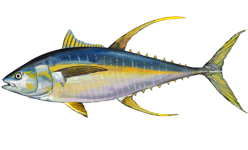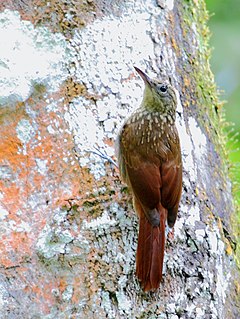
Glaucus atlanticus is a species of small, blue sea slug, a pelagic aeolid nudibranch, a shell-less gastropod mollusk in the family Glaucidae.

Galeus is a genus of catshark, belonging to the family Scyliorhinidae, commonly known as sawtail catsharks in reference to a distinctive saw-toothed crest of enlarged dermal denticles, found along the upper edges of their caudal fins. They are found in the Atlantic, the western and central Pacific, and the Gulf of California, inhabiting deep waters at or close to the sea floor. Members of this genus are rather small, slim sharks with firm bodies and thick, rough skin. Their heads are usually fairly long and pointed, and have large mouths with well-developed furrows at the corners. They have large pectoral and anal fins, and two similar dorsal fins placed well back. Many species are ornately patterned with dark saddles and/or blotches. Sawtail catsharks feed on various invertebrates and fishes, and may be either egg-laying or live-bearing. These harmless sharks are sometimes caught as bycatch but are of minimal commercial value.

The Atlantic sawtail catshark is a little-known species of catshark, part of the family Scyliorhinidae, found in a small area of the northeastern Atlantic Ocean, centered on the Strait of Gibraltar and the Alborán Sea. It is found on or close to the bottom over the continental slope, mostly at depths of 400–600 m (1,300–2,000 ft). This shark closely resembles, and was once thought to be the same species as, the blackmouth catshark ; both are slender with a series of dark saddles and blotches along the back and tail, and a prominent crest of enlarged dermal denticles along the dorsal edge of the caudal fin. It differs subtly from G. melastomus in characters including snout length, caudal peduncle depth, and the color of the furrows at the corner of its mouth.

The blackfin tuna is the smallest tuna species in the genus Thunnus, generally growing to a maximum of 100 cm (39 in) in length and weighing 21 kg.
Calpocalyx is a genus of flowering plants in the family Fabaceae. It contains the following species:
Calpocalyx brevifolius is a species of flowering plant in the family Fabaceae. It is found only in Gabon.
Calpocalyx cauliflorus is a species of flowering plant in the family Fabaceae. It is found in Cameroon and Nigeria.
Calpocalyx heitzii is a species of flowering plant in the family Fabaceae. It is found in Cameroon, Equatorial Guinea, and Gabon. It is threatened by habitat loss.
Calpocalyx klainei, the misise, misizé, or mississé, is a species of flowering plant in the family Fabaceae. It is found in Cameroon and Gabon. It is threatened by habitat loss.
Calpocalyx letestui is a species of flowering plant in the family Fabaceae. It is found only in Gabon.
Calpocalyx ngouiensis is a species of flowering plant in the family Fabaceae. It is found in Cameroon and Gabon.

Physalaemus atlanticus is a species of frog in the family Leptodactylidae. It is endemic to Brazil. Its natural habitats are subtropical or tropical moist lowland forests, freshwater marshes, and intermittent freshwater marshes.

Olrog's gull is a species of gull found along the Atlantic coast of southern Brazil, Uruguay, and northern Argentina. It was formerly considered a subspecies of the very similar L. belcheri. It is a large gull with a black back and wings, white head and underparts, a black band in the otherwise white tail, and a yellow bill with a red and black tip. Nonbreeding adults have a blackish head and a white eye ring. The species is named after Swedish-Argentine biologist Claes C. Olrog. It has a rather restricted breeding range and is threatened by habitat loss, and the IUCN has rated it as being "near threatened".

The seven-arm octopus is one of the two largest known species of octopus; based on scientific records, it has a maximum estimated total length of 3.5 m (11 ft) and mass of 75 kg (165 lb). The only other similarly large extant species is the giant Pacific octopus, Enteroctopus dofleini.
Emmelichthyops atlanticus, the bonnetmouth, is a marine fish species of grunt native to the western Atlantic Ocean, where it occurs from Florida and the Bahamas to northern South America. This species is the only known member of its genus.

The antenna codlet, Bregmaceros atlanticus, is a species of codlet found in the subtropical zones of the oceans. This species grows to 6.7 cm (2.6 in) in total length.
The bigeye squaretail, Tetragonurus atlanticus, is a fish native to the Atlantic, Indian and Pacific Oceans. They feed on soft-bodied medusae and salps and will also eat plankton. Their average length is 50 cm, and their habitat is pelagic. They are toxic to humans.

Thunnus (Neothunnus) is a subgenus of ray-finned bony fishes in the Thunnini, or tuna, tribe. More specifically, Neothunnus is a subgenus of the genus Thunnus, also known as the "true tunas". Neothunnus is sometimes referred to as the yellowfin group, and comprises three species:
The longfin lanternfish is a species of oceanodromous lanternfish that is oviparous, and a host of Sarcotretes scopeli.

The Ceara woodcreeper or Atlantic woodcreeper is a species of bird in the woodcreeper subfamily (Dendrocolaptinae). It is found in northeastern Brazil. Its natural habitats are subtropical or tropical moist lowland forest and subtropical or tropical moist montane forest.










